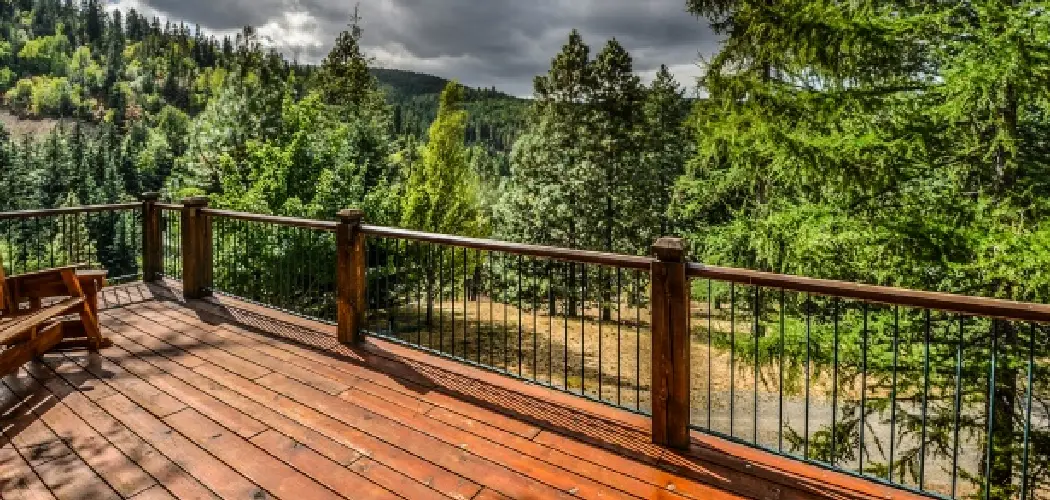Having a deck is one of the great joys of outdoor living; it’s an ideal place to entertain guests, relax with a book, or just take in some fresh air. However, decking can suffer from problems that make enjoying it difficult. One common issue is when your deck begins to sink – this can create an unsafe environment and damage the structure of your home.
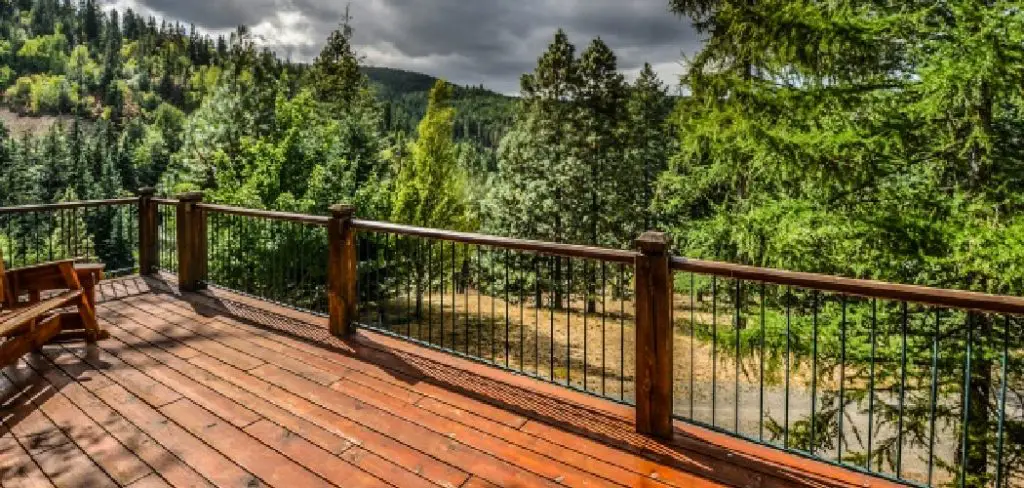
In this blog post on how to fix a sinking deck, we’ll go over how to identify if your deck has sunk and explain the steps you’ll need to take in order to repair it safely and effectively. With our help, you can restore your property’s value while creating an enjoyable outdoor space everyone will love!
Necessary Tools
Given below are the that you will need to fix a sinking deck:
Hammer
To hammer in nails and other fasteners
Pry Bar
To loosen old deck boards that have sunk into the ground
Drill
To pre-drill holes in new deck boards and to countersink fasteners
Level
To ensure that your deck is level and secure
Screws
To fasten the new boards to the old deck structure
Hose
To clean off dirt and debris from the deck
Deck Sealant
To protect the wood and keep it looking new
Step-by-step Procedure on How to Fix a Sinking Deck
Step 1: Inspect the Deck for Signs of Sinking
Check around each board and post to see if there is any settling or sinking occurring. This is most easily done while the deck is dry and clean. It can be difficult to spot small problems if the deck is wet, so it’s best to inspect it on a sunny day. If you notice any gaps between the boards, it’s likely that your deck has started to sink. This is usually caused by water, wind, and the weight of furniture or people on the deck. Remember to check around the posts too, as they can also be pushed into the ground over time.
Step 2: Determine What Caused the Sinking
The next step is to figure out what caused the sinking in the first place. This can be tricky, as a variety of factors might be responsible. Look around for any signs of water pooling or leaking near the deck; if there are, that could have contributed to the problem. If your home is near a hill or slope, this could also factor into the equation – sliding soil can push boards down over time.
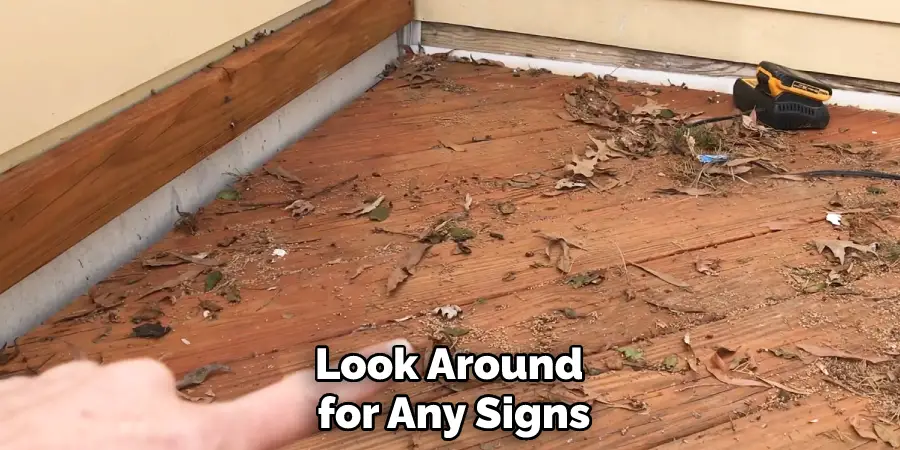
Other possibilities include soil compaction due to heavy foot traffic or furniture placement, tree roots growing underneath the deck, and even poor installation techniques by whoever built it originally.
Step 3: Secure Your Deck Posts
Once you’ve determined what caused the sinking, it’s time to start securing the posts. You’ll need to attach a metal bracket or tie-down strap around each post and secure it with screws into the ground with a drill. This will help keep your posts in place and prevent further sinking. It’s important to make sure the bracket or tie-down strap is long enough and strong enough to resist whatever forces caused it to sink in the first place.
Step 4: Replace Any Sunken Boards
If any of your deck boards have sunk too far, they will need to be replaced. First, use a pry bar to gently remove them from their current spot in the deck structure. Then, measure and cut new boards that are appropriate for the space. Pre-drill holes into these boards, as well as into the frame surrounding them; this will make fastening them easier later on. Finally, attach the new boards with screws and ensure they’re level.
Step 5: Level Out the Frames
Once you’ve replaced sunken boards, it’s time to adjust the frames of your deck so that everything is horizontal and level. This can be tricky, as there may not be much space between each board or post. However, a spirit level should do the trick! Check to make sure all corners are even and that there are no signs of warping or sinking. If needed, use shims to fill in any gaps or voids in order for everything to fit together properly.
Step 6: Fill Any Cracks or Holes
Once your deck is level again, you’ll need to fill in any cracks or holes that may have occurred due to the sinking. You can do this with a waterproof wood sealant, which you can find at any home improvement store. This will help protect your deck from further damage and keep it looking new for years to come.
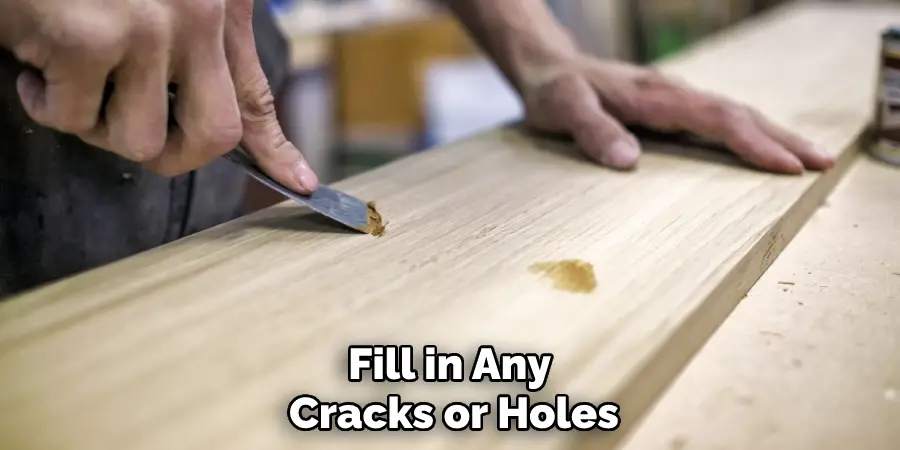
Step 7: Fasten Everything into Place
Now it’s time to secure all of your boards and frames into place. Use a drill to countersink screws into each corner and side of the frame, making sure everything is tight and secure. Once you’re finished, use a hose or brush to clean off any excess debris or dirt from the deck. But remember to be gentle – if you scrub too hard, you might damage the wood sealant!
Step 8: Apply Deck Sealant
Finally, apply deck sealant over the entire surface of the deck. This will protect and waterproof your wood, helping to prevent further damage from water, wind, and sun exposure. Allow the sealant to dry completely before walking on it again, and enjoy your newly-revived deck! This project may take some time, but the results will be worth it in both form and function.
Step 9: Perform Regular Inspections
Once you’ve fixed and sealed your deck, it’s important to perform regular inspections. Check the boards every few months for signs of sinking, warping, or cracking. If any issues arise, address them immediately to keep your deck in top condition. It might also be a good idea to have a professional come in and inspect your deck every few years, just to make sure everything is still secure.
Step 10: Enjoy Your Deck!
Now that your deck is restored and properly protected, it’s time to enjoy all the benefits of outdoor living again. Invite friends over for a BBQ, or just relax in the sun with your favorite book. With these steps, you should have no trouble keeping your deck in tip-top shape for many years to come. Always remember to prioritize safety and maintenance, so you can experience all the joys of outdoor living without worry.
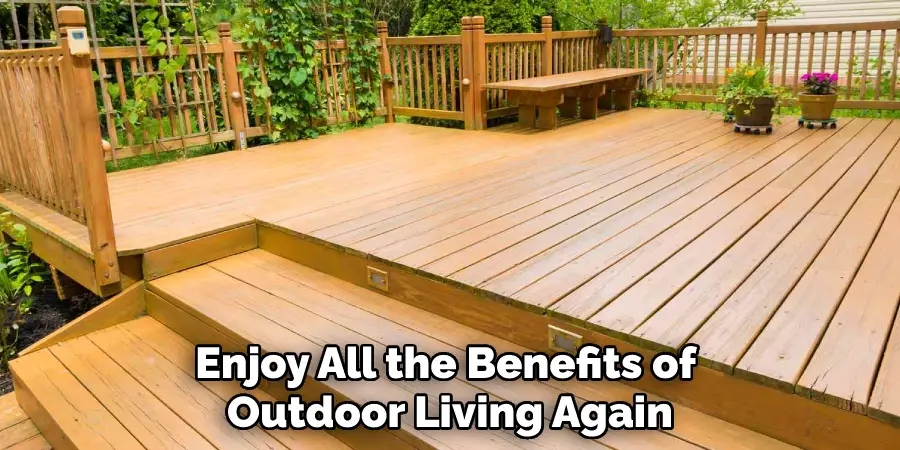
By following these steps on how to fix a sinking deck, you can easily fix a sinking deck and keep it looking great for years to come. Just remember to inspect regularly for any signs of settling or sinking – this way, you can spot problems early on and take action before any major damage is done! Good luck!
Do You Need to Hire Professionals?
In some cases, it may be necessary to hire professional deck repair contractors in order to fix a sinking deck. This should only be done if the problem is too complex for you to handle on your own. Professional deck contractors can inspect the structure, identify issues, and provide solutions in order to restore your deck. They may also be able to help with any other repairs that are needed, such as replacing boards or structural supports.
How Much Will It Cost?
The cost of fixing a sinking deck depends on the severity of the issue and the extent of repairs needed. In some cases, it may only require some minor repairs, such as replacing a few boards or screws. In more serious cases, however, it may require extensive renovations and repairs. Be sure to get several estimates from contractors in your area and compare prices before making a decision.
Frequently Asked Questions
Q: How Do I Know if My Deck is Sinking?
A: You may notice the deck boards beginning to warp, become uneven, or separate from the frame. You may also see cracks in the wood or notice that it feels spongy when you walk on it. If any of these signs are present, it’s a good idea to have a professional come in and inspect the deck.
Q: How Can I Prevent My Deck from Sinking Again?
A: After you’ve fixed a sinking deck, it’s important to take preventative measures in order to keep it secure. Make sure to inspect the deck regularly for signs of damage or settling, and consider applying a sealant or waterproof coating each year. This can help protect the wood from water damage and sun exposure, as well as make it easier to clean and maintain.
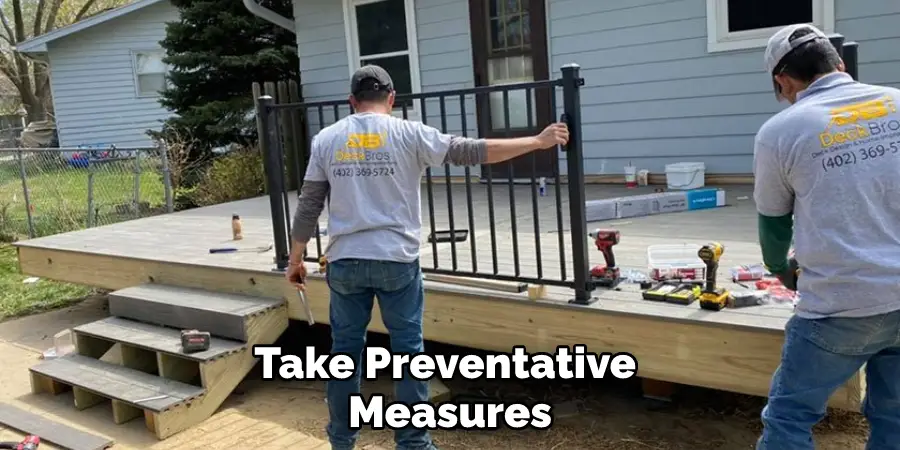
Q: How Long Does it Take to Fix a Sinking Deck?
A: The amount of time needed to fix a sinking deck varies depending on the severity of the issue and the extent of repairs necessary. Smaller projects may take just a few hours, while more complex repairs can take up to several days or even weeks. Be sure to get an estimate from a professional before beginning any repairs.
Conclusion
By following our helpful steps on how to fix a sinking deck above, you can get your deck back to its former glory and ensure that it will last for many years to come. Refinishing a wood deck is an inexpensive way to revive it, as any repairs needed may be done at the same time. However, if you feel overwhelmed by the task at hand – or don’t think you’re up to the job – you should consider hiring a professional.
A trained expert has the right tools and experience needed to get the job done right the first time. It may not be necessary, but having peace of mind is always worth it in the end. So don’t waste another minute; take action today and fix up your sinking deck! With a few simple steps, your outdoor space will be looking better than ever before!

